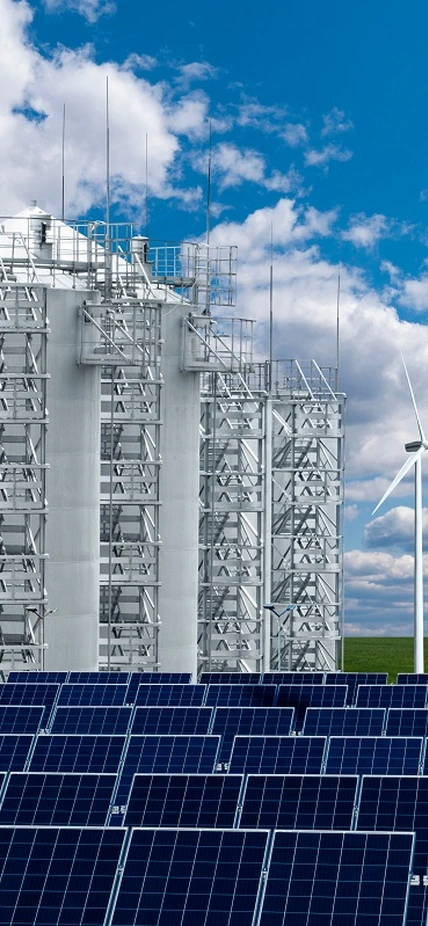Washington, DC—Designing future low-carbon energy systems to use power generated in excess of the grid’s demands to produce hydrogen fuel could substantially lower electricity costs, according to new work published by Advances in Applied Energy by Carnegie’s Tyler Ruggles and Ken Caldeira.
Renewable energy sources like the Sun and wind have natural variation due to weather patterns—some days are bright and clear, others are overcast; some days are blustery, others are still. This means that renewable power-generating infrastructure needs to be designed with this variability in mind.
To ensure that there is enough power available to meet society’s peak demands when nature isn’t cooperating, more turbines and solar panels must be built than are necessary on windy and sunny days. But on the flip side, when the weather is amenable, there is no way to use or store all of the electricity that wind or solar generators are capable of producing.
“Places that have already made substantial commitments to wind and solar power, including California, Texas, Germany, and the U.K. increasingly need to curtail production, which has raised interest in putting the unused capacity to good use,” Caldeira explained.
Having the flexibility to redirect unused energy capacity into making fuels could fill the gap between constant energy demands and variable energy resources. An example of this would be making hydrogen fuel by splitting water into hydrogen gas and oxygen gas, a process called electrolysis.
Ruggles and Caldeira, together with colleagues Jacqueline Dowling and Nathan Lewis of Caltech, set out to probe the possibility of adding this kind of flexibility into our energy system. To accurately represent the opportunities and limitations of wind and solar variability, they created a model that incorporated historical weather data.
“We found that in the modeled low-carbon systems there is almost always enough excess electricity generated to drive hydrogen electrolysis after sending the necessary power to the grid for other uses,” Ruggles said.
According to their model, a system that uses excess electricity to produce hydrogen fuel could be implemented using energy infrastructure built to supply the grid. They found that new capacity would not need to be constructed until the amount of electricity used to power hydrogen fuel cells exceeds about 20 percent of total energy demand. However, the price tag of any eventual expansion could be offset by a lower average cost of electricity under this arrangement.
“One of the biggest challenges of instituting a low-carbon or carbon-free electricity sector has been effectively integrating variable resources like wind and solar,” Caldeira concluded. “Our work demonstrates that production of electrofuels such as hydrogen could be a major step toward making better use of wind and solar resources, especially if the electrofuels could be produced at low capital cost.”
Image Credit: An artist's conception of producing hydrogen fuel from wind and solar power generation. Image purchased from Shutterstock.
__________________
This work is funded by a gift to the Carnegie Institution for Science from Gates Ventures, LLC. This work is also supported by a fellowship from SoCalGas in support of Low Carbon Energy Science and Policy.
